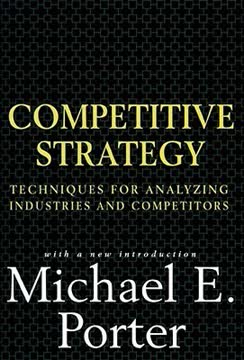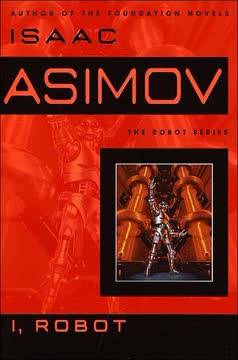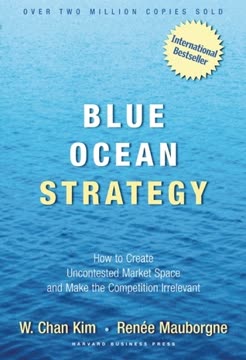つの重要なポイント
1. 3+1ルールをマスターする:人材育成、ビジネス運営、顧客サービス、自己管理
「あなたの最も重要な仕事は、SEチームをさらに優れたSEに育て、彼らが伝統的なSEの役割を超えて成長するのを助けることです。」
人材育成を優先する。 3+1ルールは効果的なSEリーダーシップの枠組みを提供します:
- 人材を育成し、サポートする
- ビジネスをビジネスとして運営する
- 顧客にサービスを提供する
- 自己管理(ルール0)
これらのルールに焦点を当てることで、SEリーダーはチームの成功を促進し、ビジネス目標を達成できます。チームメンバーのスキルとキャリアを育成することが最優先であり、それがパフォーマンスの向上と定着率の向上につながります。ビジネスを効果的に運営するためには、指標を設定し、データを分析し、戦略的な意思決定を行うことが必要です。顧客にサービスを提供することは、彼らのニーズを理解し、価値を提供することを意味します。自己管理は、役割におけるバランスと効果を維持するために重要です。
2. RADARを実施する:採用、魅力付け、育成、昇進、トップタレントの保持
「採用はあなたの最も重要な仕事の一つです。」
強力なタレントパイプラインを構築する。 RADARはタレントマネジメントの包括的なアプローチを提供します:
- 採用:多様なソースから積極的に候補者を探す
- 魅力付け:候補者がチームに参加するための魅力的な理由を作る
- 育成:継続的なスキル向上とキャリア成長に投資する
- 昇進:組織内での進展の機会を提供する
- 保持:トップパフォーマーを引き留めるための戦略を実施する
RADARを効果的に実施することで、高パフォーマンスのチームを作り、離職コストを削減できます。パートナー、顧客、クロスファンクショナルチームなど、非伝統的なソースからの採用に焦点を当てます。強力な雇用者ブランドを構築してトップタレントを引き付けます。トレーニングとメンタリングプログラムに投資してチームのスキルを育成します。明確なキャリアパスと昇進の機会を作ります。定期的に保持リスクを評価し、最良の人材を引き留めるための積極的な対策を講じます。
3. 魅力的なセールスエンジニアの価値提案を作成する
「生産性:あなたは私が素晴らしいことを成し遂げ、生産的で、最高の自分になるのを助けてくれますか?」
主要な従業員のニーズに対応する。 セールスエンジニアの価値提案(SEVP)は、以下の5つの主要分野に対応する必要があります:
- 生産性:SEが優れた成果を達成できるようにする
- チーミング:協力と帰属意識を育む
- コーチング:改善のための指導を提供する
- 報酬と認識:貢献を公正に評価する
- 育成:個人および職業の成長に投資する
強力なSEVPは、トップタレントを引き付け、保持し、パフォーマンスを向上させるのに役立ちます。期待を明確に伝え、生産性のためのリソースを提供します。チームワークとクロスファンクショナルな協力の機会を作ります。定期的なコーチングセッションとフィードバックメカニズムを実施します。公正で透明性のある報酬システムを開発します。トレーニングプログラムに投資し、各チームメンバーの個別の成長計画を作成します。
4. バランススコアカードを活用して戦略的指標を設定する
「SEビジネスをデスクの後ろから運営するのは最悪の場所です。」
重要なことを測定する。 バランススコアカードアプローチは、指標を4つのカテゴリに分けます:
- 学習と成長(人材)
- 内部プロセス
- 顧客
- 財務
この枠組みは、SE組織のパフォーマンスを全体的に把握するのに役立ちます。各指標について考慮するべき点は:
- なぜこれを測定するのか?
- 良い範囲と悪い範囲は何か?
- 結果に基づいてどのような行動を取るべきか?
- この指標がどのような行動を促す可能性があるか?
先行指標と遅行指標のバランスを取ります。望ましい行動と結果を促進する指標に焦点を当てます。定期的に指標を見直し、ビジネス目標と戦略に合致するように調整します。
5. セールスおよびクロスファンクショナルチームとの強力なパートナーシップを育む
「一線のSEマネージャーとしての成功と幸福は、一線のセールスパートナーとの関係の質に正比例します。」
戦略的な同盟を築く。 強力なパートナーシップはSEの成功に不可欠です:
- セールス:明確なコミュニケーションチャネルを確立し、目標を一致させる
- プロフェッショナルサービス:ソリューションの設計と実装で協力する
- サポート:顧客の洞察と製品のフィードバックを共有する
- プロダクトマネジメント:市場のインテリジェンスと機能要求を提供する
- パートナー:相互の成功のために支援し、力を与える
定期的なコミュニケーションと共同計画セッションがこれらの関係を築く鍵です。各チームの目標、指標、課題を理解します。相互の価値を創造し、共有の問題を解決する方法を探ります。チームの独自の洞察と能力を活用して、組織全体で価値あるパートナーとなります。
6. コーチングと認識の力を受け入れる
「コーチングは、あなたと相手が見て感じることを質問と回答を通じて発見し、共有の成功に向けて前進するための対話です。」
コーチング文化を育む。 効果的なコーチングと認識は、パフォーマンスとエンゲージメントを促進します:
- 明確な期待と目標を設定する
- 定期的なフィードバックを提供する(ポジティブおよび建設的)
- 「レビュー&プラン」セッションのような構造化されたアプローチを使用する
- 公的および私的に成果を認識する
- 個々の好みに合わせて認識をカスタマイズする
各チームメンバーとの定期的なコーチングのリズムを実施します。公式および非公式の認識方法を組み合わせて使用します。ピアコーチングをチームにトレーニングし、サポート環境を作ります。日常のやり取りや顧客とのエンゲージメントでコーチングの瞬間を活用します。個人およびチームの成功を祝うことで、望ましい行動と結果を強化します。
7. 個人およびチームのブランドを構築し、生きる
「ブランドとは、あなたがいないときに人々があなた、あなたのチーム、そしてあなたの会社について話すことです。」
魅力的な物語を作成する。 ブランドは認識と期待を形作ります:
- 望ましいブランド属性を定義する(3〜5の主要要素)
- ブランドを価値観と使命に一致させる
- 行動と言葉で一貫してブランドを伝える
- チームメンバーが個人のブランドを発展させるよう奨励する
ステークホルダーによるブランドの認識を定期的に評価します。望ましいブランドイメージを強化するために行動とコミュニケーションを調整します。ブランドを優先事項と行動の意思決定フィルターとして使用します。チームが顧客とのやり取りや内部の協力でブランドを生きるよう奨励します。強力なブランドは、チームを差別化し、組織全体で影響力と影響を生み出す機会を作ります。
最終更新日:
FAQ
What's "The Sales Engineer Manager’s Handbook" about?
- Focus on SE Leadership: The book is a comprehensive guide for Sales Engineer Managers, focusing on leadership, management, and strategic planning within the sales engineering field.
- 3+1 Rules Framework: It introduces the 3+1 Rules of SE Leadership, which are essential guidelines for managing and developing a successful sales engineering team.
- Practical Advice: The authors provide practical advice on time management, team development, customer service, and running presales as a business.
- Real-World Examples: It includes real-world examples and anecdotes to illustrate the challenges and solutions in sales engineering management.
Why should I read "The Sales Engineer Manager’s Handbook"?
- Enhance Leadership Skills: The book is designed to help SE Managers enhance their leadership and management skills, making it a valuable resource for personal and professional development.
- Strategic Insights: It offers strategic insights into running a sales engineering team effectively, focusing on long-term success rather than just hitting short-term targets.
- Comprehensive Coverage: The book covers a wide range of topics, from recruitment and development to customer service and internal processes, providing a holistic view of SE management.
- Proven Frameworks: It introduces proven frameworks and methodologies, such as the 3+1 Rules, that can be applied to improve team performance and business outcomes.
What are the key takeaways of "The Sales Engineer Manager’s Handbook"?
- 3+1 Rules: The core framework of the book, focusing on developing and serving your people, running your business as a business, serving your customers, and managing yourself.
- RADAR Framework: A method for recruiting, attracting, developing, advancing, and retaining talent within the sales engineering team.
- Balanced Scorecard Approach: The book emphasizes the importance of measuring success through a balanced scorecard, focusing on learning and development, processes, finance, and customer satisfaction.
- Importance of Branding: It highlights the significance of building a strong personal and team brand to enhance credibility and trust within the organization and with customers.
What are the 3+1 Rules in "The Sales Engineer Manager’s Handbook"?
- Develop and Serve Your People: Focus on helping your team grow and become better SEs, emphasizing development and service.
- Run Your Business as a Business: Implement metrics and processes to measure and improve the efficiency and effectiveness of the SE team.
- Serve Your Customers: Balance the needs of various stakeholders, including sales, end-users, and partners, to ensure customer satisfaction and success.
- Manage Yourself: Prioritize personal development and self-management to lead effectively and set an example for the team.
How does the RADAR framework work in "The Sales Engineer Manager’s Handbook"?
- Recruit: Actively find the right people for the SE role, considering non-traditional sources of talent.
- Attract: Close the deal with potential hires by making the process simple and showcasing the benefits of working with your team.
- Develop: Focus on continuous improvement and skill development across technical, business, and leadership domains.
- Advance and Retain: Encourage career progression and retention by understanding individual goals and providing opportunities for growth.
What is the Balanced Scorecard approach in "The Sales Engineer Manager’s Handbook"?
- Four Buckets: The approach divides metrics into four categories: Learning & Development, Processes, Finance, and Customer.
- Comprehensive Measurement: It emphasizes the importance of measuring success beyond just revenue, including team development and customer satisfaction.
- Strategic Alignment: The balanced scorecard helps align team activities with broader business goals and strategies.
- Continuous Improvement: It encourages regular review and adjustment of metrics to ensure ongoing improvement and alignment with business objectives.
What are some best quotes from "The Sales Engineer Manager’s Handbook" and what do they mean?
- "Learn the rules like a pro. So you can break them like an artist." - This quote emphasizes the importance of mastering foundational skills and knowledge to innovate and adapt creatively.
- "What Got You Here Won’t Get You There." - Highlighting the need for continuous learning and adaptation to succeed in new roles and challenges.
- "The art of leadership is saying no, not saying yes." - Stresses the importance of prioritization and focus in leadership, avoiding overcommitment.
- "Skate to where the puck is going to be, not where it has been." - Encourages forward-thinking and strategic planning to anticipate future needs and opportunities.
How does "The Sales Engineer Manager’s Handbook" address time management?
- Essential Time Management: The book emphasizes the importance of managing time effectively to focus on strategic priorities and personal development.
- Prioritization Techniques: It introduces techniques like the DOG (Distraction, Objective, Gain) theory to categorize tasks and focus on what truly matters.
- Role Modeling: Encourages leaders to set an example for their team by managing their time efficiently and avoiding unnecessary distractions.
- Self-Awareness: Highlights the need for self-awareness in time management, understanding where time is spent, and making conscious adjustments.
How does "The Sales Engineer Manager’s Handbook" suggest handling sales relationships?
- Partnering with Sales: Emphasizes the importance of building strong, collaborative relationships with sales counterparts for mutual success.
- Clear Communication: Advocates for regular, structured communication to align goals and address any conflicts proactively.
- Conflict Resolution: Provides strategies for resolving conflicts with sales, focusing on facts and mutual understanding.
- Strategic Impact: Encourages SE Managers to contribute strategically to sales efforts, thinking beyond immediate deals to long-term success.
What role does branding play in "The Sales Engineer Manager’s Handbook"?
- Personal and Team Branding: The book stresses the importance of building a strong brand for both the individual and the team to enhance credibility and trust.
- Consistency and Focus: Encourages consistent behavior and focus on core processes to build a reliable and positive brand image.
- Strategic Communication: Highlights the role of strategic communication in shaping perceptions and reinforcing the desired brand.
- Long-Term Impact: Emphasizes that a strong brand can have a lasting impact on career success and team effectiveness.
How does "The Sales Engineer Manager’s Handbook" approach customer service?
- Multiple Customer Sets: Recognizes that SEs have multiple customer sets, including end-users, partners, and sales teams, each requiring different approaches.
- Customer-Centric Mindset: Encourages a customer-centric mindset, focusing on understanding and meeting customer needs and expectations.
- Building Trust: Highlights the importance of building trust with customers through consistent, reliable service and communication.
- Proactive Engagement: Advocates for proactive engagement with customers, staying close to the money and understanding their evolving needs.
What are the challenges and solutions for SE Managers in "The Sales Engineer Manager’s Handbook"?
- Balancing Priorities: SE Managers face the challenge of balancing multiple priorities, including team development, customer service, and internal processes.
- Time Management: Effective time management is crucial to handle the diverse responsibilities and demands of the role.
- Conflict Resolution: SE Managers must navigate conflicts with sales and other stakeholders, focusing on collaboration and mutual understanding.
- Strategic Planning: The book provides solutions for strategic planning, encouraging SE Managers to think long-term and align their activities with business goals.
レビュー
バランス・スコアカードは賛否両論の評価を受けており、平均評価は5点中3.91点である。多くの読者は、ビジネス戦略と実行に不可欠であると考え、その包括的なパフォーマンス測定アプローチを高く評価している。特に、財務、顧客、内部プロセス、学習の観点からの評価が優れているとされ、マネージャーや経営者にとって必読書とされることもある。しかし、批評家の中には、この本を退屈で時代遅れと感じる人もおり、実際の適用性に疑問を持つ者もいる。内容は価値があるが、文体が乾燥していて読み進めるのが難しいと指摘する読者も少なくない。
Similar Books












